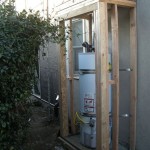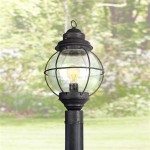Easy to Maintain Plants for Your Outdoor Space
Creating an inviting outdoor space that complements your home is a delightful endeavor. However, the prospect of maintaining a lush garden can seem daunting, especially for those with limited time or gardening experience. Fortunately, there are numerous low-maintenance plants that thrive with minimal effort, allowing you to enjoy the beauty of nature without the burden of constant care.
Drought-Tolerant Plants for Minimal Watering
Reducing watering frequency is a key factor in low-maintenance gardening. Opting for drought-tolerant plants that thrive in dry conditions can significantly simplify your routine. These plants have adapted to survive with limited moisture, making them ideal for busy individuals or those residing in arid climates. Examples include:
- Succulents: Known for their fleshy leaves, succulents store water, requiring infrequent watering. Varieties like sedums, echeverias, and agaves add vibrant colors and unique textures to your space.
- Cacti: These iconic desert plants are renowned for their ability to withstand extreme drought. With their spiky appearance and diverse shapes, cacti add a distinctive touch to any outdoor setting.
- Lavender: This fragrant herb is not only visually appealing but also attracts beneficial insects, adding a touch of aromatherapy to your garden. It requires minimal watering and thrives in well-drained soil.
- Yucca: These striking plants feature stiff, sword-like leaves and dramatic flower spikes. Yucca species are drought-tolerant, showcasing their resilience in various climates.
Low-Maintenance Groundcovers for Effortless Beauty
Groundcovers are excellent choices for blanketing areas of your garden with minimal upkeep. These plants spread horizontally, suppressing weed growth and creating a lush carpet of greenery. Consider these low-maintenance options:
- Creeping Phlox: This colorful groundcover thrives in full sun and produces vibrant blooms. Creeping phlox is relatively pest-free and requires minimal watering.
- Creeping Thyme: A fragrant herb with delicate leaves, creeping thyme is a low-growing groundcover ideal for paths and borders. It tolerates drought conditions and repels insects.
- Sedum 'Angelina': This succulent groundcover features bright golden foliage that adds warmth to your outdoor space. It requires minimal watering and is well-suited for rock gardens or container plantings.
- Vinca Minor: This hardy evergreen groundcover produces vibrant blue flowers in spring. Vinca minor spreads quickly, filling empty spaces and suppressing weeds.
Perennials for Long-Lasting Beauty
Perennials are plants that live for multiple years, returning each spring to grace your garden with their blooms. They offer long-term beauty with minimal effort. Some excellent low-maintenance perennial choices include:
- Coneflower: This striking perennial features daisy-like blooms that attract butterflies and hummingbirds. It thrives in full sun and well-drained soil.
- Salvia: These flowering plants come in various colors and shapes, adding vibrant accents to your garden. Salvia species are drought-tolerant and attract pollinators.
- Black-Eyed Susan: This cheerful perennial boasts bright yellow petals with dark brown centers. It is easy to grow and attracts butterflies, adding a touch of whimsy to your landscape.
- Russian Sage: This hardy perennial features silvery-blue foliage and fragrant purple flowers. Russian sage is drought-tolerant and attracts pollinators.
Remember that even with low-maintenance plants, regular attention is essential for optimal growth. Adequate sunlight, appropriate soil conditions, and occasional pruning can help maintain the health and beauty of your outdoor space. By selecting plants suited to your climate and lifestyle, you can create a vibrant and inviting garden that you can enjoy for years to come.

10 Best Low Maintenance Plants Guide To A Effort Garden

10 Best Low Maintenance Plants Guide To A Effort Garden

24 Low Maintenance Plants With S For Easy Identification

11 Easy Care Plants For Every Garden And A Few To Avoid An Oregon Cottage

15 Best Low Maintenance Plants Easy To Grow Outside

The Best Low Maintenance Plants For Landscaping

24 Easy Flowers To Grow In The Garden

Top 10 Low Maintenance Plants That Are Easy To Look After All Year Long Flower Power

5 Tips To Having Successful Low Maintenance Gardens Jimsmowing Com Au

Everything You Need To Know About Low Maintenance Plants
Related Posts








